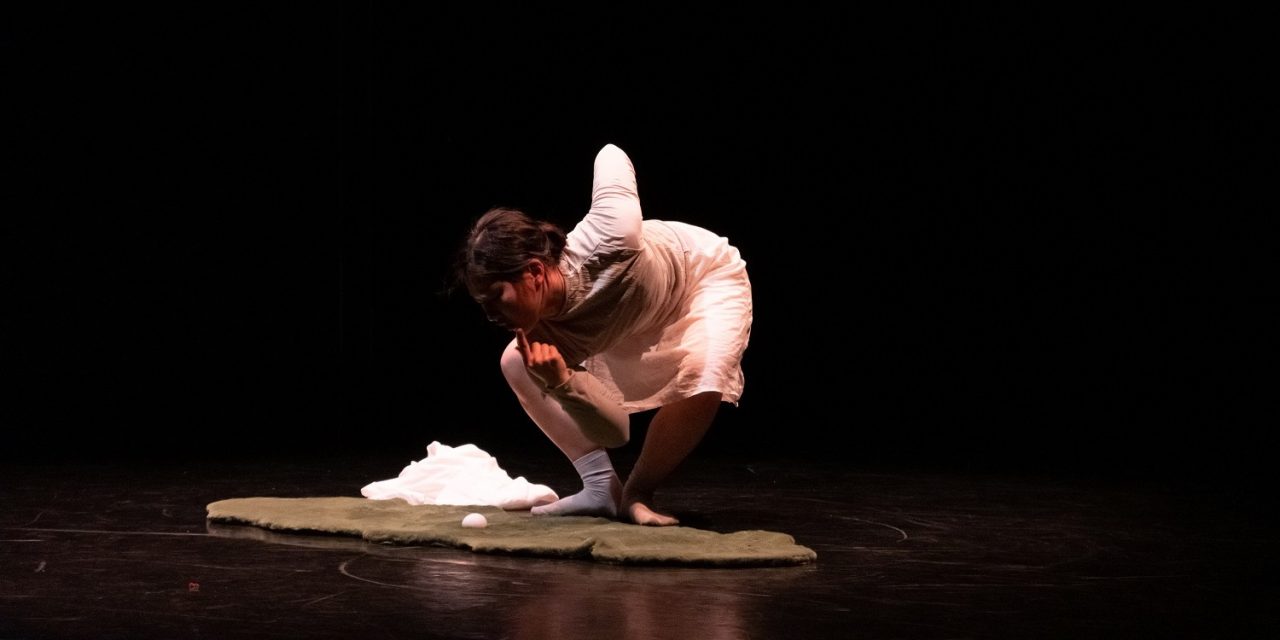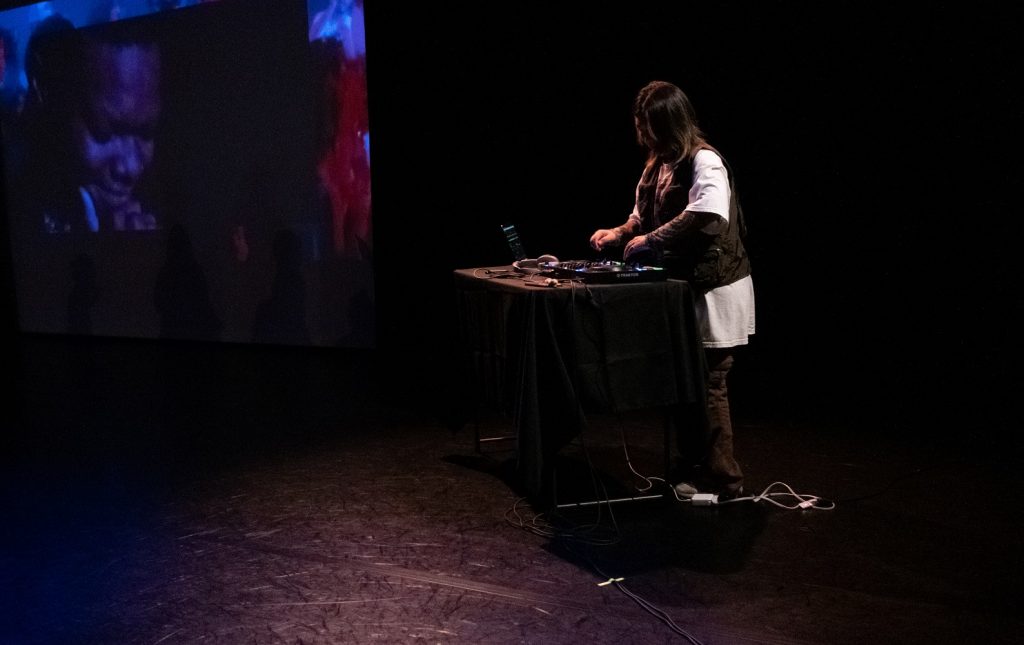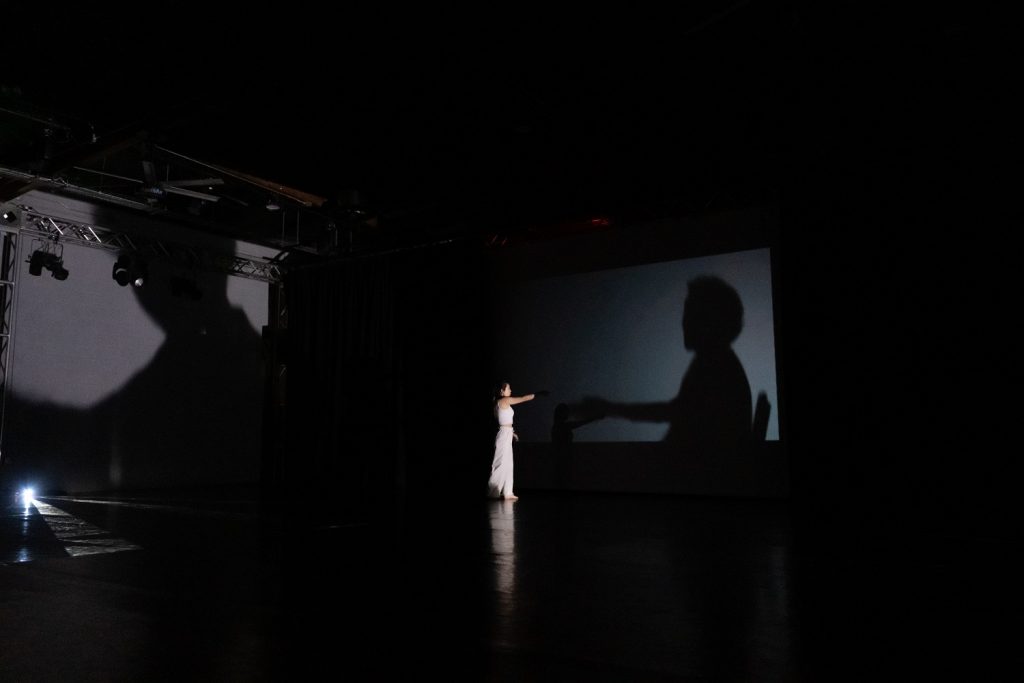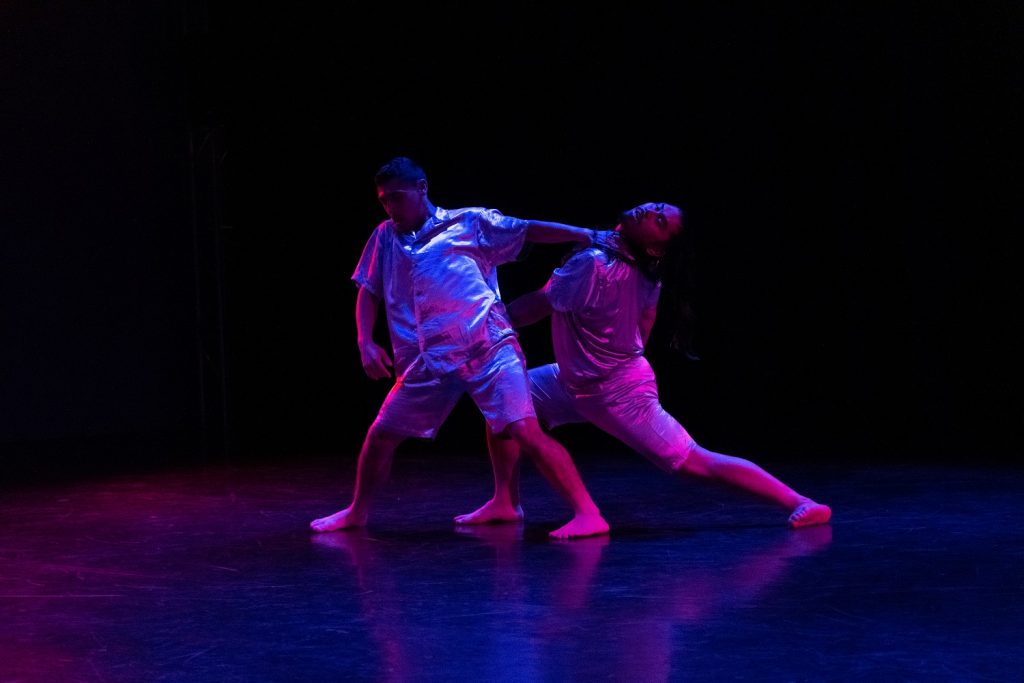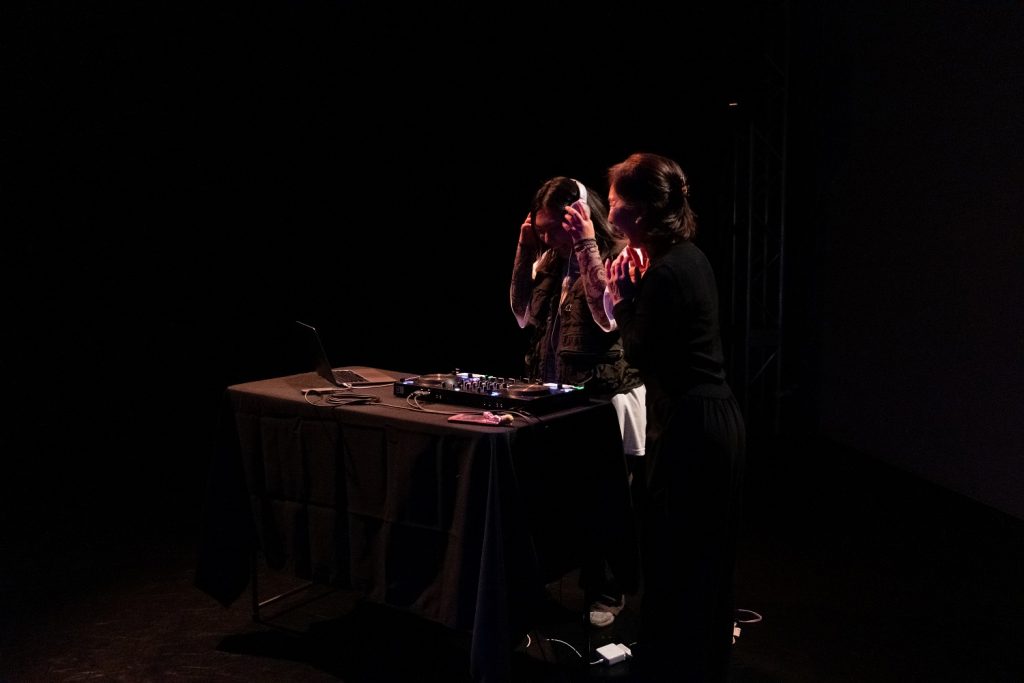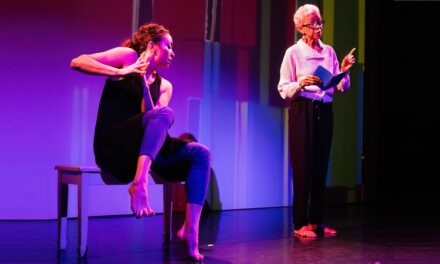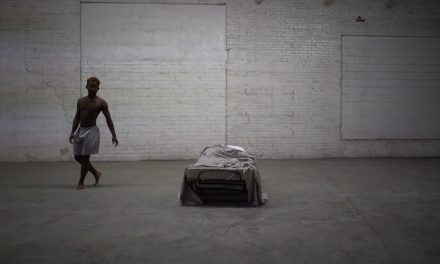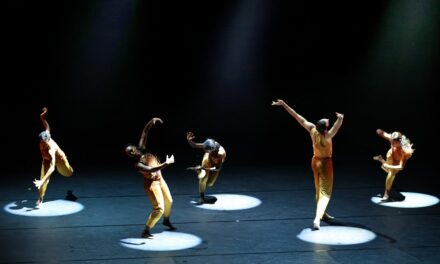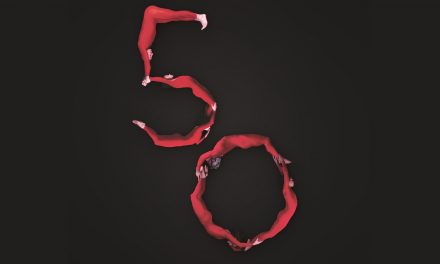Saturday’s Voices: AAPI Artist Showcase at Stomping Ground LA was a community affair — a sold out evening, seats so full they trickled onto the stage, audience members running into someone they knew every few feet. Stomping Ground’s dual purpose as a studio and venue is surely a contributing factor, with dancers coming in and out for classes every day. But curators Derrick Paris and Chelsea Roquero were to thank for the warmth. A supportive and explicitly intersectional atmosphere made the warehouse a safe place for each artist to share a snippet of work, each of which left me wanting more, more, more.
A live DJ set by Jane Cho Watts, affectionately known as D-Jane to the crowd, bopped to an onscreen loop of Maya Umemoto-Gorman’s film, let’s party. A few dancers exchanged rhythms in the jam corner — where there’s marley, there’s movement. Lovely ceramic creations by Ash Reddick were set up for sale behind the bleachers, and the lively combination of mediums in the space had a crowd of dancers warmed up and ready to soak it all in.
Sydney Winn’s Airborne opened the evening, a gorgeously composed piece of black & white cinematography that somehow still evoked color through movement and text. Moody and breezy, it was so visually immaculate that it could almost be a commercial, and I’d buy whatever she was selling.
many little griefs came next, a tenderly haunting vision of Kayla Aguila in a flowing red dress. A sweet lullaby (sung by Aguila herself) played as she gathered her griefs in the dark, experiencing them through memories, joys, sadnesses.
In Guelimja, Anne Kim danced alongside an exceptional use of shadow and projections made in collaboration with her grandmother, Yang Ja Kim. Anne’s cinematic eye for tone meant that each of the symbols, scenes, themes were expertly calibrated into unison. Together, they said so much that dialogue could not, capturing the complexity of a 20+-year bond through the spirit of the collaboration.
Azuki Umeda’s Bozo followed, an articulately nuanced piece of choreography that drew the music in front of us. Umeda holds a power in directing your attention exactly where she wants it, sometimes throwing it to the opposite side of the stage as the dancers pass their energy with precision. She and dancers Dani Mullan, Jennifer Vieweg, Phi Voba, and Jacob Weiderrich hit every cue until the audience went wild at blackout.
Just before intermission, Ryan Ruiz and JM Rodriguez took the stage for Ruiz’s this didn’t happen overnight. Delicately strung together with flawless transitions, the piece was a deft wink in four movements. A euphoric ode to tinikling, a spare and silly duet of the hips, a club anthem with soaring lifts, and a deadpan floorwork pass that was hilarious and also breathtaking — set to Le Cygne on the theremin. These artists knew their audience to a tee, and they landed every cheeky joke, nailed every transition.
The audience reconvened for a re-screening of Umemoto-Gorman’s let’s party, a club anthem that reset the ambience with stellar editing and an assembly of adored movers.
Anna Tse’s Intermediate Yoga, 4pm transported us into Mike Tyus’ yoga class as he searched for his breath. A very impressive cast of dancers made comedic stumbles even funnier for a knowing audience. And when Mike found his breath, well…the dancers’ talent did not go to waste. A comedy sketch within a dance film, Tse’s work was hilariously surprising.
Miko Hornilla took the stage next for a thoughtful solo piece, Cherry Wine. The complexity of his isolations and beautiful sequencing made the beauty in the small, simple moments even more cathartic: a lesson in dynamics.
Teresa Declines’ walang hiya heated up the stage with a feel-good anthem, dancers Ivy Ly, Erin Manalo, Emily Won, and Shayna Vu joining her for a blast of confident energy that had the audience singing and shouting along.
In the creation, salvation, and consummation of all things, Stephanie Dai was an absolute revelation. As if in a dream, she walked us softly through a deeply personal and vastly universal experience: finding the humility to practice patience and acceptance. Dai is one-of-a-kind. She moves in ways that make you understand deep sorrows and great joys all at once.
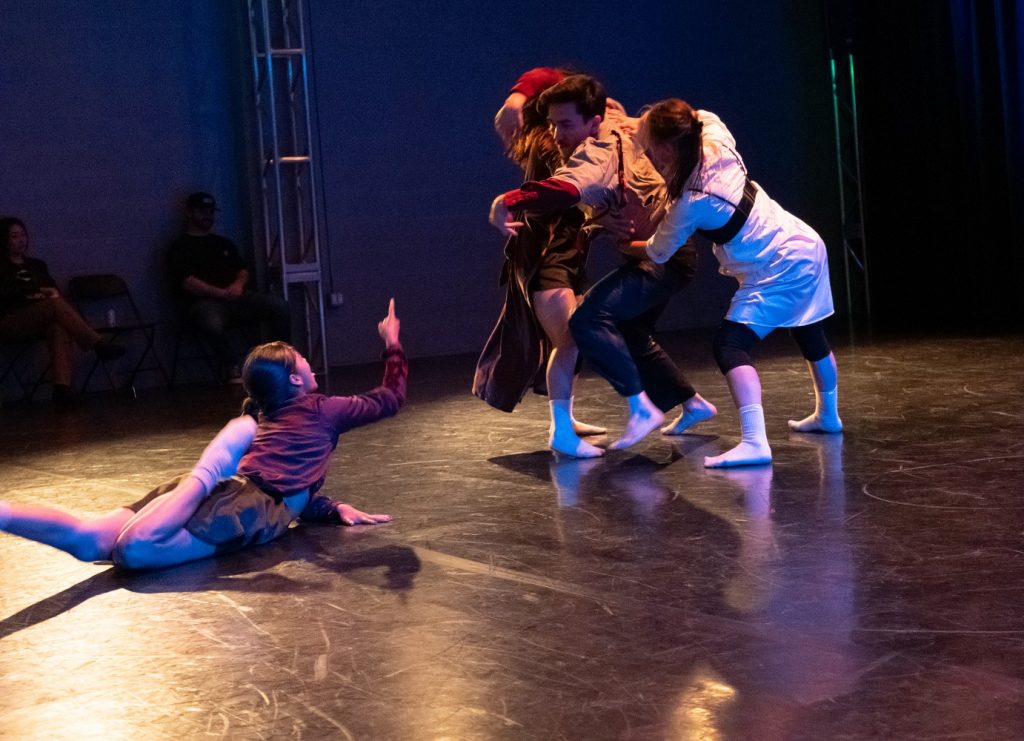
VOICES – Chelsea Roquero, Casey Shea, Kaia Makihara, and Melissa Valenzuela in avoir…au revoir – Photo by Victoria Roman
Curator Chelsea Roquero’s avoir…au revoir closed the evening, a fantastic adventure that tamed chaos into choreography for a number that made you want to join in. Roquero and dancers Casey Shea, Colleen Hendricks, Kaia Makihara, and Melissa Valenzuela pulled us into their world for a whirlwind that was over too soon.
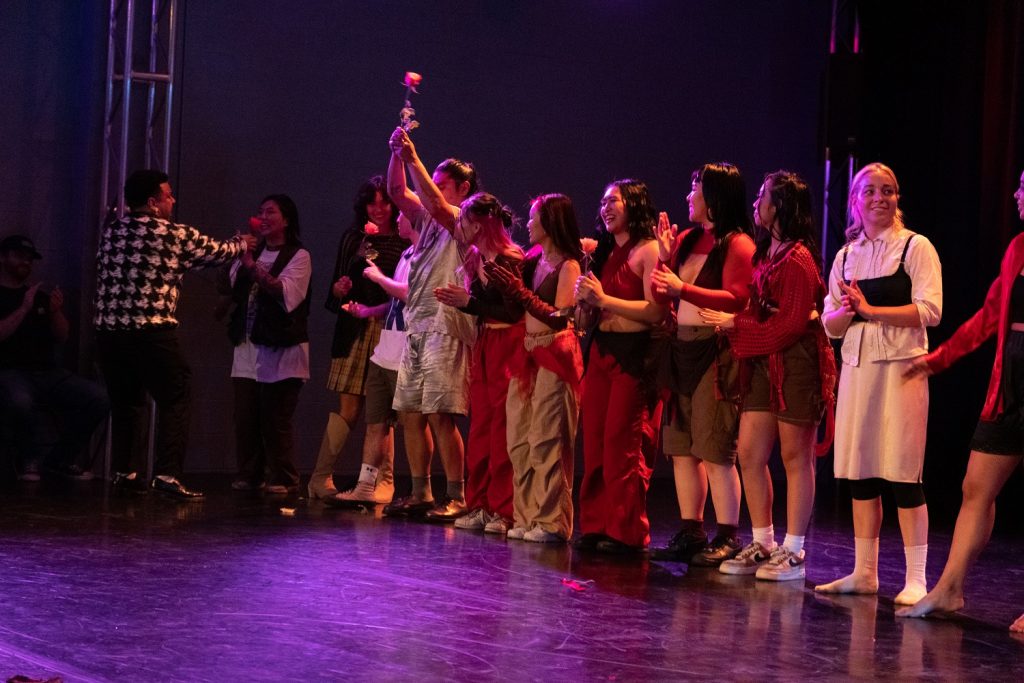
VOICES – Curtain Call – L-R Derrick Paris, handing a rose to Jane from above, Sydney Schafer in the black long sleeve and boots, JM Rodriguez, Ryan Ruiz, Teresa Declines, and Casey Shea – Photo by Victoria Roman
I found that the inimitable joy in this night came not only from the representation, but the way the volume of representation in this program platformed individual stories and artists. Not just that we have “diverse, vibrant, and rich” stories, the way a generic brochure or a large proscenium venue would describe a group of minorities. But we as AAPI artists have our own stories: they belong to us, they are specific to us, and we wield them as artists through articulate and affecting work.
This abundance of AAPI stories onstage in one evening frees the artists to find their own nuance, releasing them from the looming responsibility of representing their entire diaspora in one work. The local dance community came out to listen, and to celebrate every single artist and their collection of stories — and that’s the magic of curators who participate actively in the community.
Written by Celine Kiner for LA Dance Chronicle.
Featured image: VOICES – Stephanie Dai in the creation, salvation, and consummation of all things – Photo by Victoria Roman

